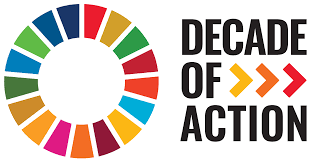Alternatives to Imprisonment- Decade of Action

The global incarceration rate has been steadily rising, with nearly 11 million individuals detained either awaiting trial or serving sentences worldwide. Prison overcrowding presents a longstanding and pervasive challenge for numerous member states, impacting a substantial majority of countries globally.
Overcrowding in prisons extends beyond spatial limitations; it represents a significant barrier to establishing a safe, secure, and humane prison environment. It undermines fundamental imprisonment objectives, including societal safety and offender rehabilitation. Operating well beyond intended capacity severely compromises various aspects such as nutrition, sanitation, hygiene, health services, prisoner engagement, care for vulnerable populations, and management of high-risk individuals. Moreover, it fosters conflicts and violence and exacerbates preexisting mental and physical health issues, thereby posing significant management hurdles for prison administrations. Additionally, overcrowded facilities strain resources available for prisoner education, vocational training, and rehabilitation programs, further diminishing prospects for successful reintegration into society. This confluence of factors renders overcrowded prisons fertile grounds for neglect, abuse, disease, corruption, criminal influence, and violent radicalization.
When non-custodial measures are employed instead of imprisonment, they play a direct role in decreasing the prison population. Additionally, they enhance the rehabilitation and reintegration opportunities for offenders, leading to a sustained reduction in prison overcrowding over time. Moreover, non-custodial measures often prove to be more economical than imprisonment, allowing for the redirection of essential resources towards support services like social welfare and healthcare agencies. In essence, opting for alternatives to imprisonment represents a more efficient and logical approach to addressing crime in numerous instances, serving as a pivotal strategy in mitigating the issues presented by overcrowded prisons.
Drawing upon its extensive expertise in the field, the UNODC provides the following services to advance the sustainable and gender-sensitive application of non-custodial measures and alleviate prison overcrowding:
1. Facilitating legislative reform to ensure the availability and sustainability of a broad spectrum of alternatives to imprisonment in law, policy, and practice across all stages of the criminal justice system.
2. Enhancing the capacity of criminal justice agencies to implement non-custodial measures through training and advisory services, in collaboration with national training institutions.
3. Engaging in efforts to cultivate public support for non-custodial measures by raising awareness of their rationale and benefits among criminal justice stakeholders and the general public through public awareness campaigns.
4. Advocating for research and data collection on the utilization of alternatives to imprisonment, particularly examining their impact on reducing prison populations and recidivism rates.
This resource entails 3 valuable handbooks on:
1. Basic principles and promising practices on alternatives to imprisonment
2. Strategies to reduce overcrowding in prisons
3. Treatment and care for people with drug use disorders in contact with the criminal justice system- alternatives to punishment
